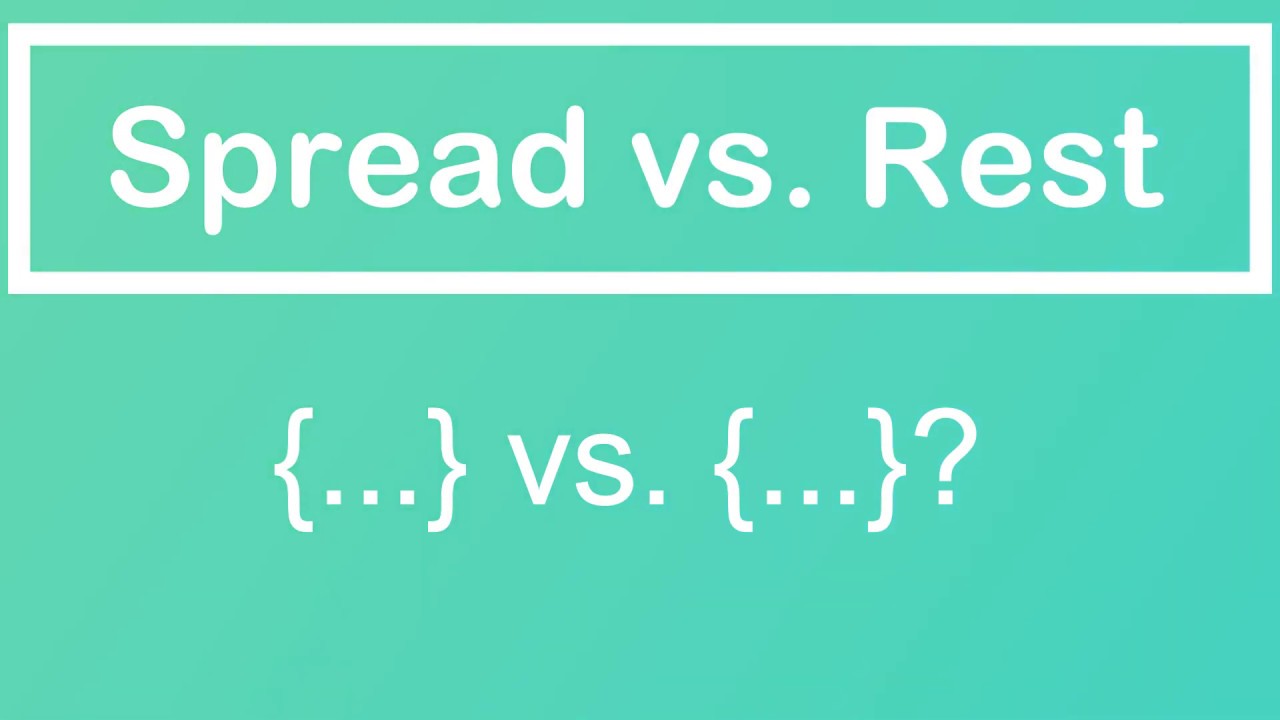Understanding the Difference Between Spread and Rest Operators in JavaScript
 Raaj Aryan
Raaj AryanTable of contents

JavaScript, a versatile and ever-evolving language, has seen significant improvements with the introduction of ES6 (ECMAScript 2015). Among these enhancements are the spread and rest operators, denoted by the three-dot syntax (...). While they look identical, their purposes and functionalities are distinct. Understanding these operators is crucial for writing clean, efficient, and modern JavaScript code. In this article, we'll delve into the spread and rest operators, explore their uses, and provide practical examples to illustrate their differences.
Understanding the Spread Operator
The spread operator allows an iterable (like an array or string) to be expanded in places where zero or more arguments (for function calls) or elements (for array literals) are expected. It's a powerful tool for handling arrays and objects, making your code more readable and concise.
Common Use Cases for the Spread Operator
Copying Arrays
const originalArray = [1, 2, 3]; const copiedArray = [...originalArray]; console.log(copiedArray); // Output: [1, 2, 3]Merging Arrays
const array1 = [1, 2, 3]; const array2 = [4, 5, 6]; const mergedArray = [...array1, ...array2]; console.log(mergedArray); // Output: [1, 2, 3, 4, 5, 6]Expanding Strings
const str = "Hello"; const chars = [...str]; console.log(chars); // Output: ['H', 'e', 'l', 'l', 'o']Copying Objects
const originalObject = { a: 1, b: 2 }; const copiedObject = { ...originalObject }; console.log(copiedObject); // Output: { a: 1, b: 2 }Merging Objects
const obj1 = { a: 1, b: 2 }; const obj2 = { b: 3, c: 4 }; const mergedObject = { ...obj1, ...obj2 }; console.log(mergedObject); // Output: { a: 1, b: 3, c: 4 }
Understanding the Rest Operator
The rest operator collects multiple elements and condenses them into a single element, typically an array. It's often used in function parameter lists to handle an indefinite number of arguments.
Common Use Cases for the Rest Operator
Function Parameters
function sum(...numbers) { return numbers.reduce((acc, number) => acc + number, 0); } console.log(sum(1, 2, 3, 4)); // Output: 10Destructuring Arrays
const [first, ...rest] = [1, 2, 3, 4]; console.log(first); // Output: 1 console.log(rest); // Output: [2, 3, 4]Destructuring Objects
const { a, b, ...rest } = { a: 1, b: 2, c: 3, d: 4 }; console.log(a); // Output: 1 console.log(b); // Output: 2 console.log(rest); // Output: { c: 3, d: 4 }
Key Differences Between Spread and Rest Operators
Purpose:
Spread: Expands elements into individual elements.
Rest: Collects multiple elements into a single array or object.
Usage Context:
Spread: Typically used in array and object literals, as well as function calls.
Rest: Used in function parameter definitions and array/object destructuring.
Syntax Position:
Spread: Appears where values are expanded (e.g., in function calls or array/object literals).
Rest: Appears in function parameters or destructuring patterns to gather remaining elements.
Practical Example: Combining Spread and Rest Operators
Combining these operators can lead to elegant and powerful code. Let's see an example where both are used together.
function greet(firstName, lastName, ...titles) {
console.log(`Hello, ${firstName} ${lastName}`);
console.log('Titles:', titles);
}
const person = ['John', 'Doe', 'Mr.', 'Dr.', 'Sir'];
greet(...person);
// Output:
// Hello, John Doe
// Titles: ['Mr.', 'Dr.', 'Sir']
In this example, the spread operator expands the person array into individual arguments for the greet function, while the rest operator collects additional titles into a single array.
Conclusion
The spread and rest operators in JavaScript offer powerful capabilities for handling arrays, objects, and function arguments. Understanding the nuances and proper contexts for using each operator will help you write more concise and readable code. By mastering these tools, you'll enhance your ability to manage data structures efficiently and effectively in your JavaScript projects.
Feel free to experiment with these operators in your projects, and you'll soon discover the many ways they can simplify your code and improve its maintainability.
💰 You can help me by Donating
Subscribe to my newsletter
Read articles from Raaj Aryan directly inside your inbox. Subscribe to the newsletter, and don't miss out.
Written by

Raaj Aryan
Raaj Aryan
MERN Stack Developer • Open Source Contributor • DSA With Java • Freelancer • Youtuber • Problem-solving •
